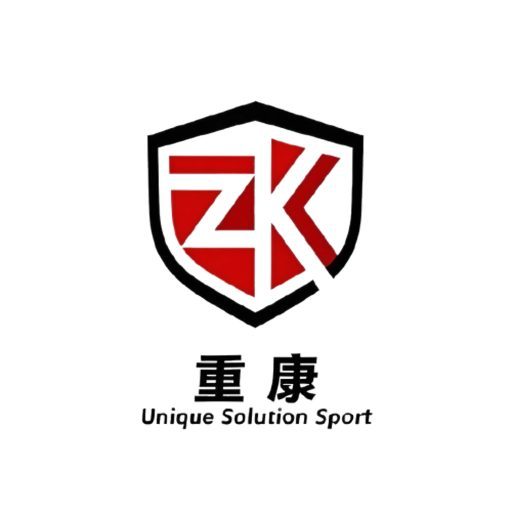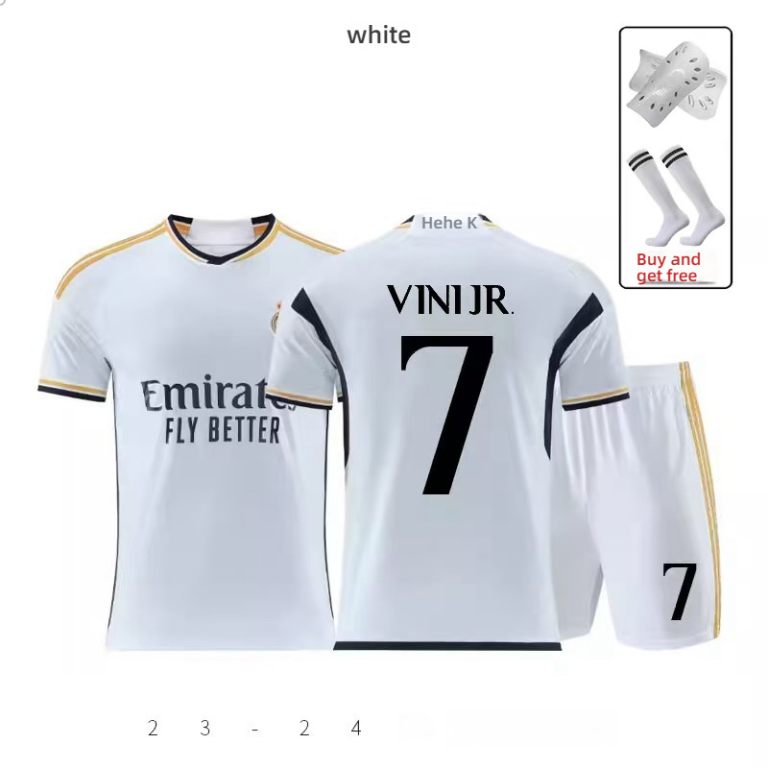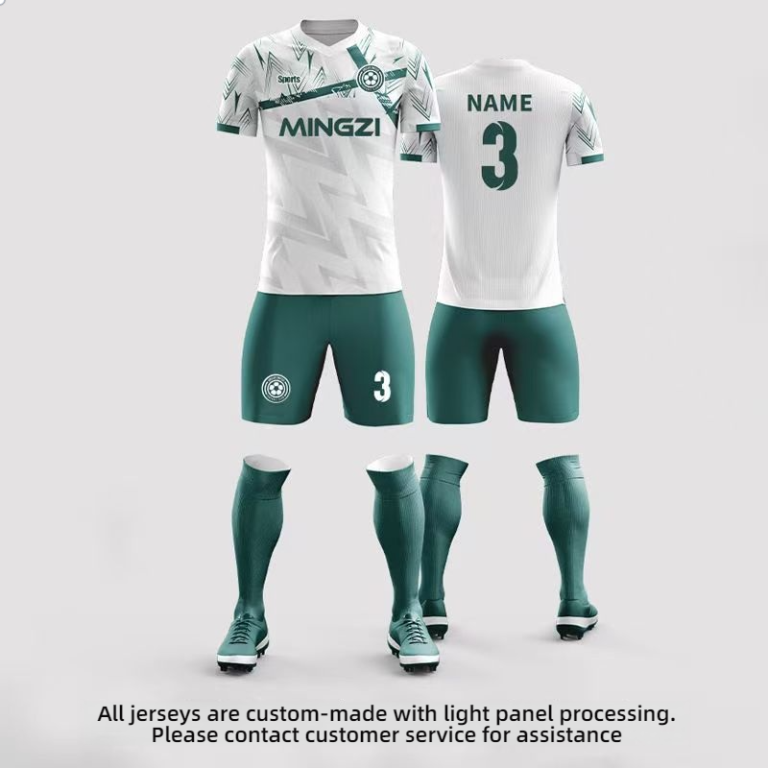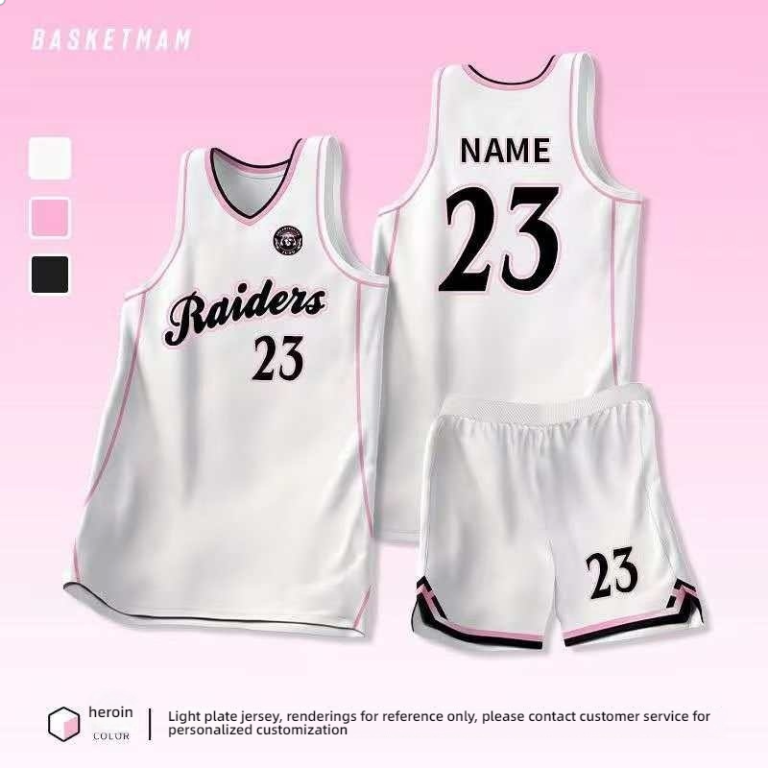Optimizing Sports Jersey Fabric: IT, Q, X, and Eco-Friendly Aspects
sportswear, as an critical device in sports opposition, has a right away impact on the consolation, performance, and standard wearing enjoy of athletes. this newsletter will speak how the choice of cloth in sports jerseys affects athletic performance and luxury, and examine the significance of cloth environmental friendliness and sustainability in current sports.
Overview of Sports Uniform Fabrics
the choice of sports jersey cloth, as an essential aspect of sports activities equipment, directly impacts the consolation and performance of athletes. under is an outline of sports jersey fabrics.
the selection of fabric must take into account factors which includes breathability, moisture-wicking, sturdiness, and elasticity to make certain that athletes preserve their first-class condition at some point of intense bodily interest. present day sports activities jersey fabric normally use high-tech fiber substances, mixed with traditional textile strategies, to gain ideal overall performance.
Cotton fabric, because of its natural skin-friendliness and accurate moisture-wicking competencies, is frequently used to make sports activities T-shirts and shorts. however, cotton fabric is prone to deformation while wet and has particularly terrible durability, so it’s far often combined with other fibers to enhance its overall performance.
Nylon cloth is understood for its excellent durability and tear resistance, and is generally used for making sports pants and jackets. Nylon fabric has good elasticity, offering top aid all through motion whilst maintaining accurate breathability.
Polyester fiber material, also called, is valued for its lightweight, long lasting, and smooth-to-easy residences, and is extensively used within the production of various kinds of sportswear. Polyester fiber cloth has appropriate elasticity and restoration, able to adapting to various ranges of bodily hobby, in addition to sturdy wrinkle resistance.
Spandex mixed fabrics combine the high elasticity of spandex with the stability of other fibers, making them suitable for sports activities requiring high flexibility, including gymnastics and swimming. The addition of spandex permits the cloth to recover quickly after stretching, decreasing the feeling during motion.
in addition to the aforementioned not unusual fabrics, there are also a few unique-performance fabrics used for specific activities. as an example, antibacterial and scent-resistant fabric can effectively inhibit the increase of bacteria, keeping the apparel dry; smart temperature-regulating fabrics can automatically regulate body temperature in step with changes within the external environment, providing athletes with a at ease wearing revel in.
In terms of material performance, moisture-wicking ability is a key indicator for comparing sports activities jersey fabric. top moisture-wicking properties can assist athletes expel sweat quick, preserving the body dry and reducing discomfort all through workout. Elastic recuperation ability is associated with the consolation and flexibility of the jersey for the duration of movement. durability is critical for ensuring the lifespan of the jersey, particularly all through high-depth activities.
With the growing attention of environmental safety, the environmental friendliness and sustainability of fabric have also grow to be considerations. some brands are starting to apply fabric consisting of recycled fibers and biodegradable substances to lessen environmental effect.
In precis, the selection of sports jersey fabric wishes to recollect multiple elements, along with cloth type, performance signs, and environmental friendliness. through affordable mixture and scientific design, secure and efficient sports activities equipment can be supplied for athletes.

The importance of choosing the fabric for team jerseys
the selection of cloth for sports activities uniforms is critical for the overall performance and consumer experience of the clothing. here are several angles that illustrate its importance:
The fabric comes into direct contact with the pores and skin, and its moisture-wicking and sweat-evaporation properties directly have an effect on the comfort of the athlete. fabrics can quickly take in sweat and evaporate it, keeping the pores and skin dry and averting the sticky sensation resulting from excessive sweat, which has a direct effect on improving the athlete’s competitive kingdom.
the elasticity of the cloth is key to ensuring freedom of motion during exercise. for the duration of physical activity, apparel wishes to stretch and get better with the body’s actions, and a terrific elastic material can lessen the feeling of, enhancing the performance of exercise.
put on resistance is a degree of the sturdiness of the material. all through sports activities, the uniform is often subjected to friction and stretching, so choosing a durable fabric can make bigger the lifespan of the uniform, lessen the frequency of substitute, and decrease charges.
The cloth of the uniform also desires to have certain antibacterial and scent-resistant homes. in particular in excessive-temperature and excessive-humidity sports environments, this feature can lessen bacterial boom, maintain the garb smooth, and enhance the wearing experience.
The breathability of the material is also a aspect that can not be not noted. right breathability facilitates alter frame temperature, averting warmth accumulation because of overly thick or dense clothing, consequently retaining the athlete’s most excellent situation for the duration of competition.
protection is likewise an vital attention in cloth selection. For high-threat sports activities together with soccer or American football, the material of the uniform desires to have sure tear-resistant properties to reduce the danger of damage.
The environmental friendliness of the fabric is likewise an vital fashion in cutting-edge sports clothing. selecting environmentally pleasant fabrics not handiest facilitates reduce the effect on the environment however also complements the emblem’s picture and social duty.
In summary, the selection of fabric for sports uniforms isn’t always simplest related to the consolation, performance, and protection of the athletes but also displays the brand photo and environmental philosophy. consequently, deciding on the appropriate cloth is vital for improving the overall nice and market competitiveness of sports activities clothing.

Common types of sports jersey fabrics
Nylon fabric is preferred through sports activities manufacturers for its lightness, sturdiness, and elasticity. It boasts strong tear resistance, making it appropriate for sports that require common modifications in motion, inclusive of basketball, volleyball, and badminton. Nylon jerseys make sure comfort at the same time as also offering properly air movement, helping athletes live cool throughout exercising.
Polyester fiber cloth is thought for its washability, wrinkle resistance, and quick-drying properties. This cloth continues the vibrancy of colours and the sturdiness of form while used to make jerseys, making it suitable for various outside sports activities like football, tennis, and golf. Polyester fabric has exact elasticity and stretch recovery, permitting jerseys to return to their original form quick after stretching.
Spandex combined fabric combines the high elasticity of spandex with the comfort of the fabric. The spandex fiber complements the pliancy of the fabric, making the jersey more body-conforming and presenting a better athletic experience. This type of cloth is frequently used in persistence sports together with marathons and lengthy-distance jogging. The addition of spandex additionally improves the abrasion resistance of the jersey, decreasing pores and skin discomfort for the duration of exercising.
Cotton fabric is broadly used in leisure sports activities clothing because of its desirable moisture absorption and breathability. Cotton jerseys are gentle to the touch and relaxed to wear, mainly throughout low-intensity exercise, as they assist the frame perspire and stay dry. but, cotton material isn’t always perfect for high-depth sports activities as it dries slowly and is vulnerable to deformation.
unique purposeful fabric are also more and more being used in sports jerseys. as an instance, Coolmax material with superb breathability can hold athletes cool whilst offering superior drying velocity; and antimicrobial fabric can efficiently lessen odors produced after exercise. these functional fabrics, tailored to one of a kind sports wishes, provide athletes a extra expert wearing enjoy.
when selecting sports jersey fabric, it’s far essential to take into account not only the basic characteristics of the cloth however also to decide based totally on the particular characteristics of the sport. extraordinary sports activities have varying requirements for the breathability, elasticity, and capability of jerseys, making the choice of cloth vital for enhancing athletic performance and comfort.
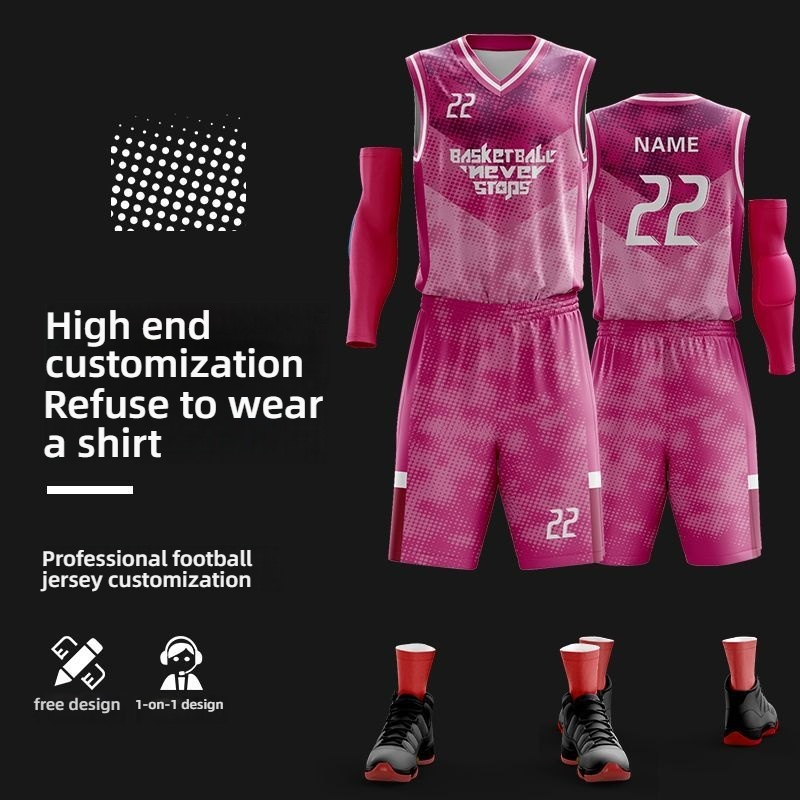
Fabric properties affect the quality of jerseys.
The performance of the cloth on a sports activities jersey at once impacts its satisfactory, and the following are numerous key overall performance factors and their affect on the best of the jersey:
Moisture Wicking: The jersey material need to have outstanding moisture-wicking abilties to preserve athletes dry throughout bodily hobby. fabric can speedy take in sweat and disperse it through the fiber structure, decreasing moisture at the pores and skin floor and improving consolation at some stage in exercising.
Elastic recovery: in the course of movement, the jersey cloth needs to accommodate the stretching and contraction of the frame. fabrics with excessive elastic recovery can speedy go back to their original shape after exercising, fending off deformation and relaxation, and maintaining the healthy and durability of the jersey.
wear Resistance: As jerseys are often worn and washed, they’re continuously subjected to friction. fabric with robust put on resistance can extend the lifespan of the jersey, reducing wear-related damage and fading.
Antibacterial and smell manage: at some stage in physical pastime, the frame produces a great amount of sweat, that may result in bacterial increase and smell. fabric with antibacterial and scent-manage residences can inhibit the boom of bacteria, decreasing the odor of the apparel and retaining hygiene.
Breathability: proper breathability lets in the jersey to maintain air flow, assisting athletes alter their frame temperature and avoid pain from overheating or cooling.
Luster and Lightfastness: The jersey cloth need to have a positive quantity of luster to make it greater colourful in video games. fabrics with accurate lightfastness are less vulnerable to fading, retaining the appearance of the jersey clean and new.
touch and comfort: gentle fabric reduce pores and skin friction, enhancing consolation. fabrics ought to stability capability with touch and luxury experiences.
safety performance: In positive sports, the jersey cloth needs to meet safety standards, inclusive of having a low coefficient of friction and no longer pilling, to lessen the hazard of damage at some point of play.
thinking about these performance aspects, a jersey no longer simplest enhances the crew’s visible photograph but also improves the athletes’ performance in phrases of practicality. consequently, deciding on the precise fabric is crucial for manufacturing sports jerseys.

Consideration of fabric environmental friendliness and sustainability
The environmental sustainability of fabrics in sports jerseys is an crucial issue of present day manufacturing methods. the subsequent is a detailed description of this thing:
The environmental sustainability of fabrics is typically pondered inside the following factors:
-
uncooked fabric source: whether the raw materials for the jersey material come from sustainably controlled forests or farms, and whether or not they’re certified natural, immediately impacts the environmental overall performance of the fabric. as an instance, the usage of natural cotton reduces using chemical insecticides and fertilizers, that’s essential for the safety of soil and water resources.
-
Dyeing technique: traditional dyeing strategies often use massive quantities of chemical dyes, which may comprise harmful materials and pollute the surroundings. jersey fabrics, on the other hand, use low-poisonous or non-poisonous dyes, as well as waterless or low-water dyeing methods, to reduce water intake and pollutants.
three. Recycled substances: the use of recycled or regenerated materials to fabricate jersey fabric, together with recycled polyester fibers, can lessen dependence on crude oil, decrease carbon emissions, and enlarge the lifestyles cycle of uncooked materials.
four. Biodegradability: a few jersey fabric use biodegradable materials, such as polylactic acid (PLA), which could decompose naturally below herbal conditions and decrease the lengthy-term effect on the surroundings.
Sustainability issues encompass:
-
manufacturing process: decreasing strength consumption and waste technology all through the complete production method from fabric manufacturing to jersey manufacturing is essential. the use of power-efficient technologies and device, as well as the optimization of manufacturing strategies, can efficaciously reduce environmental footprints.
-
lifestyles Cycle assessment: engaging in a life cycle evaluation of the jersey material, together with the ranges of uncooked fabric acquisition, manufacturing, use, recycling, and disposal, to make certain that every level complies with the concepts of sustainable improvement.
-
Recycling and usage: Jerseys must be without difficulty recyclable and reusable after they attain the end of their life. by means of designing fabric which can be easy to disassemble, subsequent recycling and processing can be facilitated, decreasing waste.
four. Social obligation: taking note of the protection of workers’ labor rights at some point of the production of fabric and the manufacturing of jerseys to ensure that social responsibility is carried out at some point of the manufacturing system.
five. market trends: With the growing environmental consciousness of purchasers, there may be an growing call for for and sustainable products in the marketplace. brands and manufacturers need to keep up with market trends and release jersey products that meet environmental requirements.
via the above concerns of environmental sustainability, now not most effective can the overall photo of jersey merchandise be stronger, but it may additionally promote the sustainable improvement of the sports activities industry, contributing to the protection of the environment in the world.

Certainly, here is the translation of the content provided:”Conclusion”
the usage of fabrics is gambling an an increasing number of crucial role in the production of sports uniforms. the subsequent are a few key points regarding this thing:
-
discount of Chemical Use: conventional cloth production procedures may contain the usage of big quantities of chemical dyes and auxiliaries, which may be harmful to the environment and human fitness. fabrics, such as organic cotton and bamboo fibers, use natural uncooked substances, decreasing using chemicals and being more environmentally friendly.
-
decrease strength and Water intake: The production process of fabric frequently emphasizes energy and emissions reduction. as an example, the manufacturing of recycled polyester fibers makes use of recycled plastic bottles, decreasing crude oil consumption and greenhouse gas emissions. moreover, water recycling for the duration of the manufacturing system also reduces water usage.
-
Biodegradability: some fabrics like polylactic acid (PLA) and polyhydroxyalkanoates (PHA) are biodegradable, letting them decompose in herbal environments and reduce the lengthy-time period plastic waste problem.
-
Carbon Emission reduction: From the cultivation of uncooked materials to the producing of finished merchandise, the production system of fabric pursuits to lessen carbon emissions. This not handiest aligns with the global fashion of reduction but additionally allows manufacturers to establish a inexperienced and environmentally friendly picture.
-
Sustainable supply Chain control: when brands pick fabrics, additionally they keep in mind the sustainability of the whole supply chain. This includes the auditing of raw material providers to ensure compliance with environmental and hard work requirements, as well as selling the greening of the entire industrial chain.
-
customer attention and reputation: As client consciousness of environmental issues increases, so does the reputation of fabrics. brands that use fabrics can entice extra purchasers who are interested by sustainable lifestyles.
-
logo Social obligation: the usage of fabrics is an embodiment of a emblem’s social duty. through taking such measures, brands can’t simplest beautify their emblem photo but also advantage a aggressive area inside the fierce marketplace competition.
In summary, the attention of material eco-friendliness and sustainability is of exquisite importance inside the production of sports uniforms. This not only enables guard the environment but additionally complements the market competitiveness of products and meets consumers’ demands for and environmentally friendly products. consequently, manufacturers need to fully take into account those elements in fabric selection to reap a win-win scenario among monetary blessings and environmental safety.
